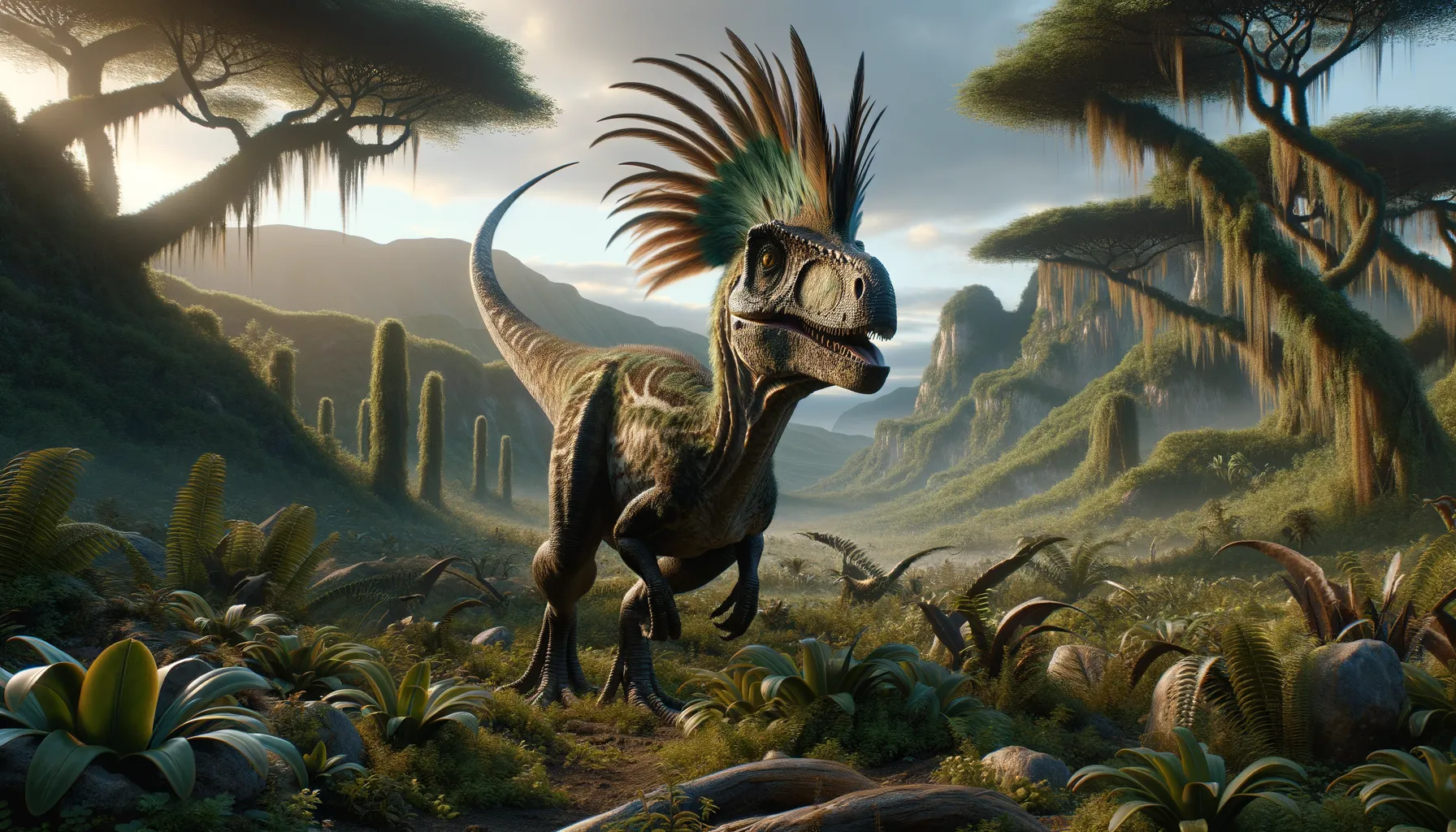
Corythoraptor
A crested gem from the Cretaceous times!
Period
Cretaceous
Length
Approximately 2.5 meters long.
Height
Around 1.8 meters tall.
Weight
Roughly 150 kilograms.
Corythoraptor was a fascinating dinosaur characterized by its cockatoo-like crest, which is believed to have been used for display or communication. It lived during the late Cretaceous period and was discovered in the Ganzhou region of China. Known for its swift movements, Corythoraptor likely led a complex life involving intricate social structures. Its relatively recent discovery has provided new insights into oviraptorid family behaviors and characteristics.
Diet
Corythoraptor was an omnivore, likely feeding on a variety of plants and small animals. Its diet might have included seeds, fruits, insects, and even small reptiles. This diverse diet would have enabled it to adapt to various ecological niches.
Hunting
Corythoraptor likely used its speed and agility to catch small prey. It might have employed ambush tactics or foraged for insects and small reptiles. Its sharp claws would have been effective tools for catching and handling food.
Environmental challenges
Corythoraptor inhabited a dynamic environment with fluctuating temperatures and seasonal changes. Finding food might have been challenging during drier seasons when resources were scarce. Predation from larger theropods would have been a constant threat, necessitating awareness and defensive strategies. Competition with other omnivorous species would have also shaped its survival tactics.
Speed
Relatively fast for a dinosaur its size.
Lifespan
Estimated lifespan of 10 to 20 years.
First discovery
Discovered in China in 2017.
Fun Facts
- Corythoraptor lived around 70 million years ago during the Late Cretaceous period.
- It was discovered in the Jiangxi Province of southern China.
- Corythoraptor had a distinctive helmet-like crest on its head, similar to a modern cassowary.
- Scientists believe Corythoraptor was covered in feathers, which suggests it might have been warm-blooded.
- The name Corythoraptor means 'helmet thief', inspired by its crest.
- It was an omnivorous dinosaur, eating both plants and small animals.
- Corythoraptor belonged to a group of dinosaurs closely related to birds called oviraptorosaurs.
Growth and Development
Corythoraptor likely grew rapidly during the early stages to avoid predation. Juveniles would have needed protection from parents or the herd until they were capable of defending themselves. The crest may have played a role in the development of social identity or status within the group. Reaching reproductive maturity would have been essential for passing on genes and ensuring species survival.
Habitat
Corythoraptor lived in what is now southeastern China, in forested regions with an abundance of plant life. The area likely featured diverse ecosystems, including rivers and marshlands, providing ample food sources. Seasonal weather changes would have affected available resources and habitat conditions. Trees and vegetation offered shelter and nesting sites for protection and rearing young.
Interaction with other species
As an omnivore, Corythoraptor might have had diverse interactions in its ecosystem. It could have competed with other small to medium-sized dinosaurs for food. Interactions with herbivores and predators would have influenced its foraging strategies and group dynamics. The social structure may have allowed for cooperative behaviors such as group foraging or collective defense.
Natural lifespan
Corythoraptor's natural lifespan was likely similar to other small to medium theropods, around 10 to 20 years.
Reproduction
Corythoraptor likely laid eggs in nests built on the ground, much like modern avian species. Parental care, especially from mothers, would have been crucial in ensuring hatchling survival. Crests may have been significant in mating displays or selecting partners, contributing to reproductive success. Eggs and younglings would have been vulnerable to predators, necessitating well-chosen nesting sites and vigilant parental defense.
Social behaviour
Corythoraptor may have lived in small groups or family units, benefiting from social structures for foraging and protection. Vocalizations, visual displays involving crests, and body postures could have facilitated communication among individuals. Social behavior may have included cooperation in rearing young and joint defense against predators. Group dynamics might have been influenced by environmental factors and seasonal changes affecting resource availability.
Fossil locations
Fossils of Corythoraptor have predominantly been found in the Nanxiong Formation, located in the Ganzhou region of China. These discoveries are relatively recent, with the species being formally described in 2017. The areas where fossils were found were rich in sedimentary deposits, aiding the preservation of such specimens. The site adds valuable information to the diversity and evolution of oviraptorids during the late Cretaceous period.
